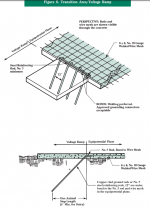- Location
- Illinois
- Occupation
- retired electrician
But the NEC could not require rebar to be installed in a footing to create a concrete encased electrode. They could require a copper wire to be placed in the concrete to be used as an electrode, but the code has not done that.Right but in practice 99.9% of buildings will have rebar, so either the concrete people will end up doing electrical work or the electrician will end up doing concrete work.
Anyway, I don't see a statement about prohibiting neutral current flowing on piping systems to be in conflict with anything in 90.2 if they wanted to, which they don't because the organization is too far gone and a lost cause.
The installation of the rebar is not electrical work. The only electrical work with when you have re-bar used as a concrete encased electrode is the connection of the grounding electrode conductor to the re-bar and that is typically done by the electrician.
There are plenty of ways the code could be written to get rid of objectionable current without writing rules that are outside of the scope of the NEC.


